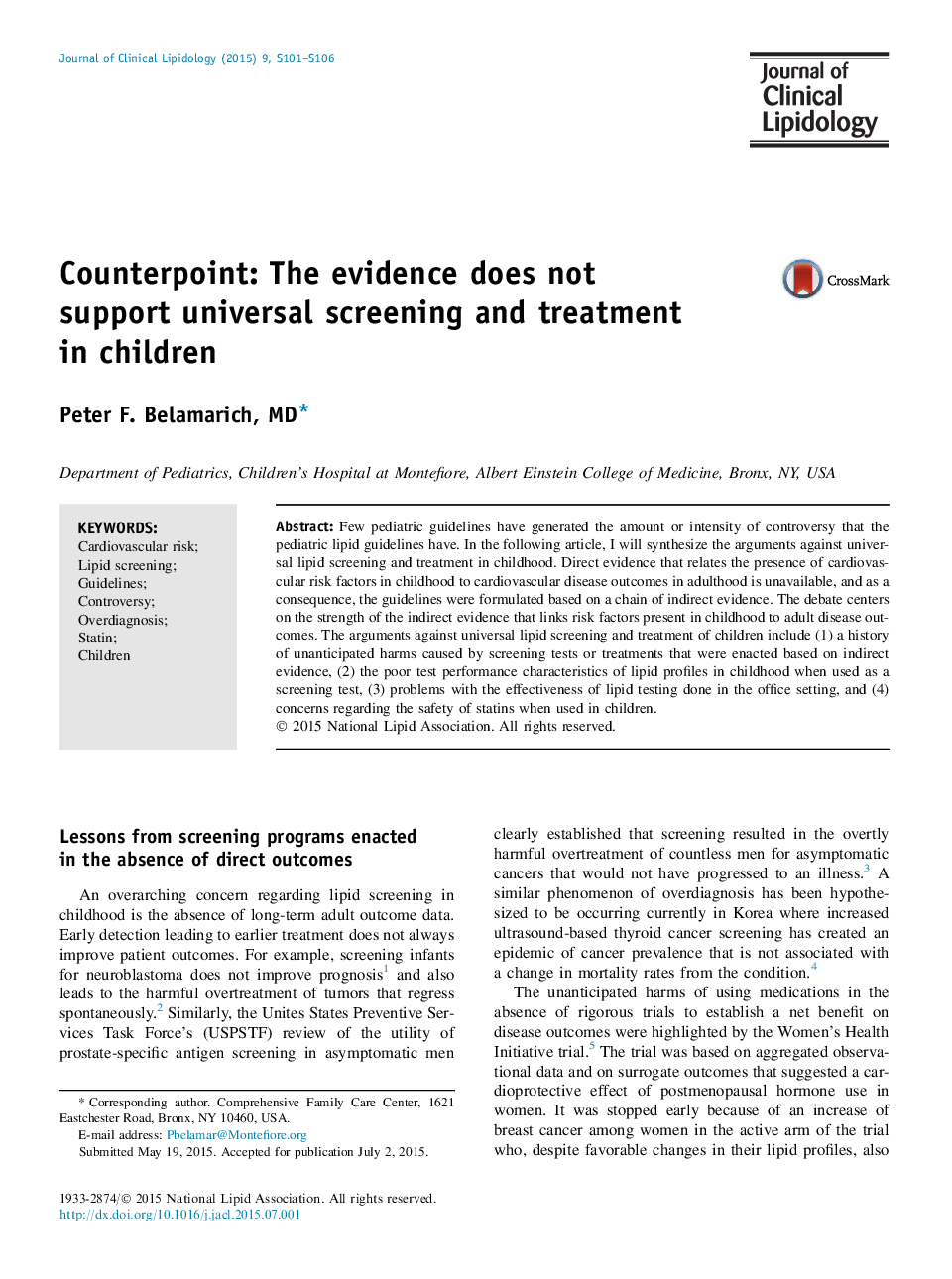| Article ID | Journal | Published Year | Pages | File Type |
|---|---|---|---|---|
| 2965818 | Journal of Clinical Lipidology | 2015 | 6 Pages |
•The lipid screening guidelines have generated a significant amount of controversy.•Some screening programs enacted in the absence of direct outcome data have caused harm.•Lipid abnormalities defined by statistical cut points do not track well into adulthood.•The effectiveness of lipid screening is unproven and its uptake by pediatricians is low.•Statins use is associated with a risk of incident diabetes.
Few pediatric guidelines have generated the amount or intensity of controversy that the pediatric lipid guidelines have. In the following article, I will synthesize the arguments against universal lipid screening and treatment in childhood. Direct evidence that relates the presence of cardiovascular risk factors in childhood to cardiovascular disease outcomes in adulthood is unavailable, and as a consequence, the guidelines were formulated based on a chain of indirect evidence. The debate centers on the strength of the indirect evidence that links risk factors present in childhood to adult disease outcomes. The arguments against universal lipid screening and treatment of children include (1) a history of unanticipated harms caused by screening tests or treatments that were enacted based on indirect evidence, (2) the poor test performance characteristics of lipid profiles in childhood when used as a screening test, (3) problems with the effectiveness of lipid testing done in the office setting, and (4) concerns regarding the safety of statins when used in children.
